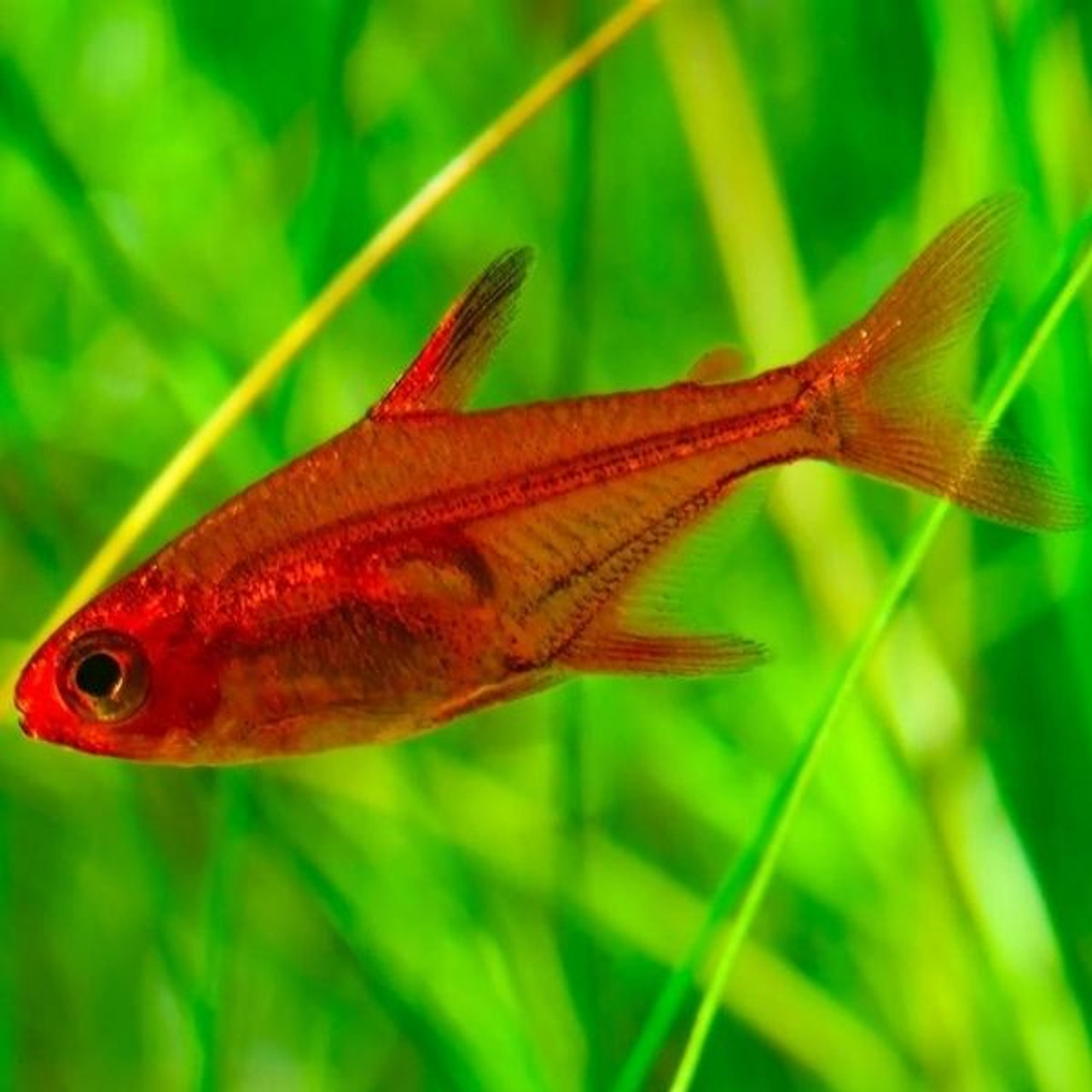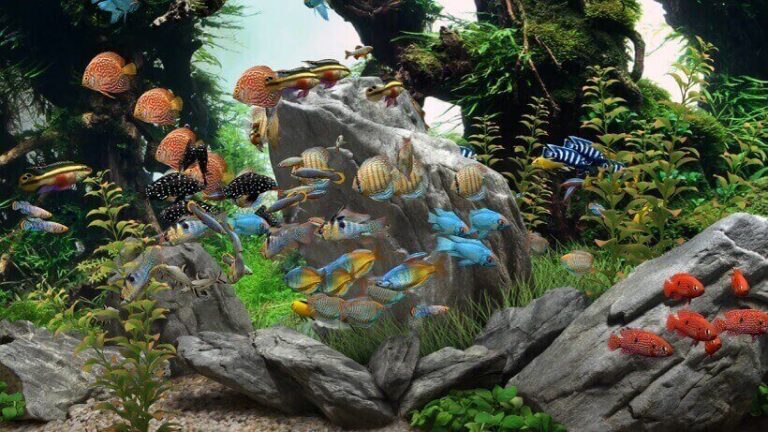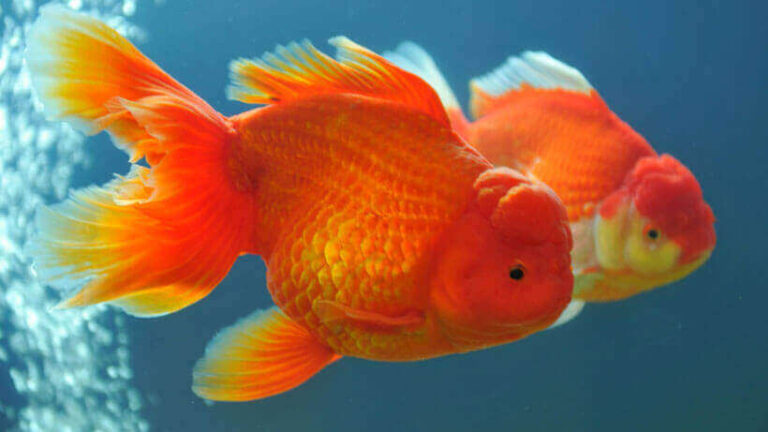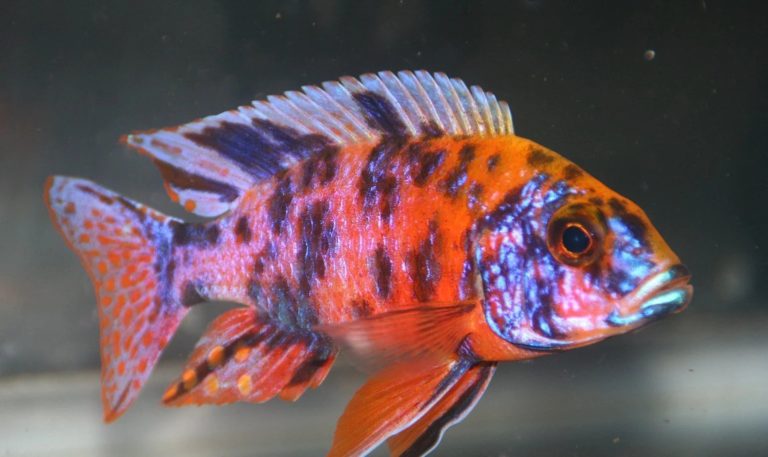Ember Tetra
Ember Tetra (Hyphessobrycon amandae) is a small, freshwater fish that has gained popularity among aquarists due to its vibrant coloration, peaceful nature, and relatively easy care requirements. This fish is native to the slow-moving waters of the Araguaia River basin in central Brazil.
Here is a guide to everything you need to know about Ember Tetra:
Ember Tetra Fish Species Summary:
| Scientific Name: | Hyphessobrycon amandae |
| Origin: | Araguaia River basin, Central Brazil |
| Diet: | Omnivore (primarily flake or pellet food, with live and frozen foods as supplements) |
| Behavior: | Peaceful |
| Behavior Towards Their Own Species: | Schooling fish, best kept in groups of 6-10 or more. |
| Swimming Zone: | Middle |
| Water Temperature: | 23 – 29 °C |
| Water Hardness: | 1 – 10 GH |
| pH Level: | 5.5 – 7.0 |
| Minimum Aquarium Volume: | 38 Liters (for a small group) |
| Adult Size: | Up to 2.5 cm |
| Reproduction: | Egg layers, require a separate breeding tank with plenty of plants. |
| Lifespan: | 2 – 3 years (with proper care) |
| Care: | Easy to moderate, requires regular water quality checks, a varied diet, and a well-planted aquarium. |
Appearance and Size
- Color: The Ember Tetra boasts a striking orange-red hue that grows more vivid as the fish thrives in optimal living conditions. This bright coloration is a good indicator of the fish’s health and well-being.
- Size: These fish are on the smaller side, with fully grown adults only reaching about 1 inch (2.5 cm) in length, making them perfect for nano aquariums or as part of a community in larger tanks.
- Fins: The fins of the Ember Tetra are almost completely transparent, but the edges may exhibit a subtle blackish tint, adding to the contrast of its vibrant body color.
- Sexual Dimorphism: There is a noticeable difference in the appearance between males and females. Females tend to be slightly larger and have a rounder, more robust body shape, whereas males are typically smaller and exhibit a more slender, streamlined appearance. This difference in size and shape becomes more apparent during breeding season, as the female’s body swells with eggs.
Lifespan
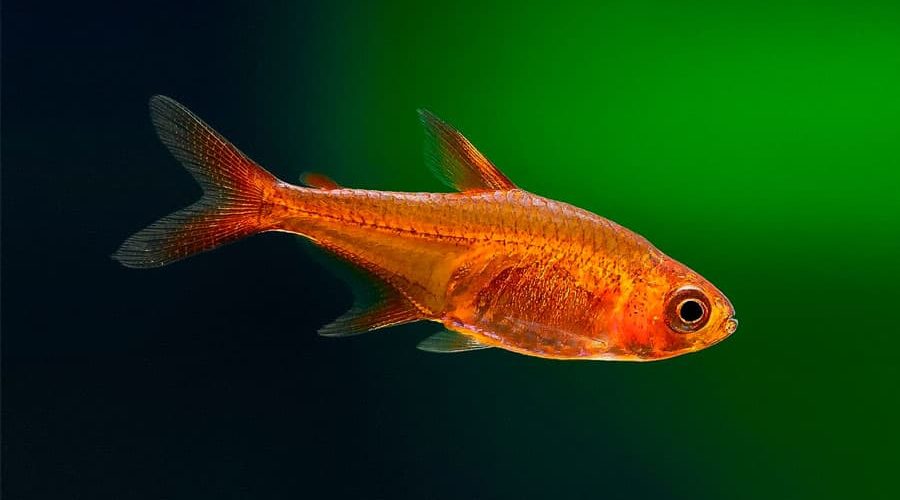
Typically, the Ember Tetra has an average lifespan of approximately 2-3 years when kept in captivity. However, with meticulous care, attention to their environment, and a well-balanced diet, it is possible for them to exceed this average and live for a longer period. Proper maintenance of water parameters, keeping them in a stress-free environment, and regular check-ups for any signs of disease are essential practices to ensure their longevity.
Diet
Ember Tetras are omnivorous creatures, meaning they have a varied diet that includes both plant and animal matter. Their dietary habits in the wild are quite varied, and to keep them healthy and vibrant in captivity, it is crucial to mimic these natural habits as closely as possible.
A balanced diet is essential for the Ember Tetra, as it ensures that they receive all the necessary nutrients for their growth, color development, and overall well-being. The primary component of their diet should be high-quality flake or pellet food, specifically formulated for small tropical fish. These specially designed foods provide a good balance of vitamins, minerals, and essential amino acids that the Ember Tetra needs to thrive.
In addition to flake or pellet food, Ember Tetras also enjoy a variety of live and frozen foods. Daphnia (water fleas), brine shrimp, and bloodworms are particularly appreciated and can contribute to a more varied and nutritionally complete diet. Live foods not only provide essential nutrients but also encourage natural hunting and foraging behaviors, which is important for the mental well-being of the fish.
Moreover, vegetable matter should also be a part of their diet. Offer them blanched vegetables like spinach, lettuce, or zucchini on occasion. While they may not readily consume large amounts of plant material, it does provide essential fibers that aid in digestion.
Feeding should be done in small quantities and multiple times a day, as they have small stomachs. Overfeeding should be avoided at all costs as it can lead to obesity and other health-related issues, as well as water pollution. A general rule of thumb is to provide only as much food as they can consume within 2-3 minutes, and to remove any uneaten food promptly.
Another aspect to consider is the water quality in the tank, as this can also affect the absorption of nutrients by the fish. Poor water quality can lead to stress and a weakened immune system, making the fish more susceptible to diseases. Therefore, it is essential to maintain the water quality at optimal levels and to provide a varied and balanced diet to ensure the health and longevity of the Ember Tetra.
In summary, the diet of the Ember Tetra should be a well-balanced mix of high-quality flake or pellet food, supplemented with live and frozen foods, and occasional vegetable matter. Feeding should be done in small quantities, multiple times a day, and water quality should be maintained at optimal levels. Providing a varied and nutritionally complete diet is essential for the health, coloration, and overall well-being of the Ember Tetra.
Water Parameters
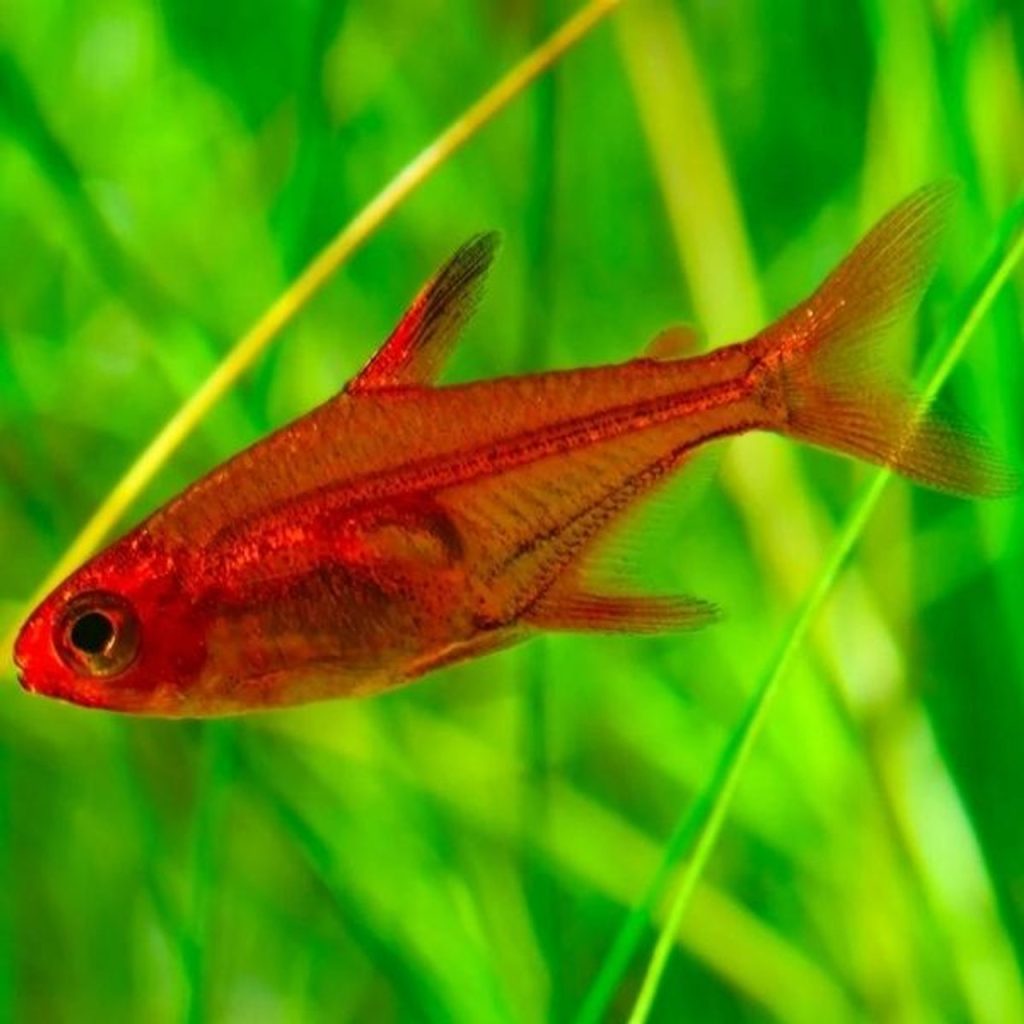
- Temperature: Ember Tetras thrive in water temperatures that mimic their natural habitat, which is typically warm. The ideal water temperature range for keeping Ember Tetras healthy and comfortable is between 73-84°F (23-29°C). Consistent temperatures within this range will help to reduce stress and maintain their metabolism at an optimal rate.
- pH Level: The acidity or alkalinity of the water is measured by its pH level. Ember Tetras prefer slightly acidic to neutral water, so it is important to maintain the pH level between 5.5 and 7.0. This range is more conducive to their health and will also facilitate breeding, as it mimics the water conditions found in their natural habitat.
- Hardness: Water hardness refers to the amount of dissolved minerals, mainly calcium and magnesium, in the water. Ember Tetras are accustomed to soft water in their natural environment, so it is best to keep the water hardness between 1 and 10 dGH (degrees of General Hardness).
- Maintaining Stable Water Parameters: It is crucial to maintain stable water parameters to keep Ember Tetras healthy and stress-free. Sudden changes in water temperature, pH, or hardness can cause stress and lead to health problems. Therefore, it is important to regularly check the water quality using a water test kit and make any necessary adjustments gradually.
- Regular Water Changes: Regular water changes are also essential to maintain optimal water quality. It is recommended to change about 25-30% of the water every two weeks. However, this can vary depending on the tank size, the number of fish, and the efficiency of the filtration system. It is important to use a dechlorinator when adding new water to the tank to remove any harmful chemicals.
In summary, maintaining the correct water parameters is essential for the health and well-being of Ember Tetras. The ideal water temperature is between 73-84°F (23-29°C), the pH level should be between 5.5 and 7.0, and the water hardness should be between 1 and 10 dGH. Regularly checking the water quality and performing regular water changes will help to maintain these parameters and ensure a healthy environment for the Ember Tetras.
Tank Setup
- Tank Size: Ember Tetras are small, active fish that enjoy swimming in groups, so it’s important to provide them with adequate space. A minimum tank size of 10 gallons (38 liters) is recommended for a small group of Ember Tetras. However, a larger tank would be more suitable if you plan to keep a larger group or if you plan to keep them with other species of fish. Keeping them in a group of at least 6-10 individuals will help them feel more secure and display more natural behaviors.
- Decoration: Ember Tetras originate from the slow-moving waters of the Araguaia River basin in Brazil, which is characterized by dense vegetation and a soft, leaf-littered bottom. Therefore, they prefer a densely planted tank with lots of hiding spots. Using a fine, dark substrate, such as sand or fine gravel, will not only mimic their natural habitat but also highlight their vibrant colors. Adding driftwood and leaf litter will also help to create a more natural environment and provide additional hiding spots. The leaf litter will also help to lower the pH of the water and release tannins, which have antibacterial properties.
- Plants: Live plants are highly recommended as they provide shelter, help to maintain water quality, and also provide a natural food source. Plants like Java moss, Java fern, Anubias, and Cryptocorynes are all good choices as they can thrive in the same water parameters as the Ember Tetras. Floating plants, such as water lettuce or duckweed, can also be added to provide some shade and reduce the intensity of the lighting.
- Lighting: Ember Tetras prefer dim or subdued lighting, as it closely mimics their natural habitat, where the water is often stained with tannins and the dense vegetation provides plenty of shade. Bright lighting can cause stress and lead to more timid behavior. Therefore, it is recommended to use a low-intensity light or to add floating plants that will help to diffuse the light.
- Filtration: A good quality filter is essential to maintain optimal water quality. However, it is important to choose a filter that does not create too much current, as Ember Tetras prefer slow-moving waters. A sponge filter or a hang-on-back filter with adjustable flow are good options.
- Heater: A heater is also essential to maintain a stable water temperature. It is recommended to use a heater with a thermostat to ensure that the temperature remains within the ideal range of 73-84°F (23-29°C).
In summary, the ideal tank setup for Ember Tetras should mimic their natural habitat as closely as possible. A minimum tank size of 10 gallons (38 liters) is recommended for a small group, with a fine, dark substrate, plenty of live plants, driftwood, and leaf litter. Dim or subdued lighting is preferred, and a good quality filter and heater are essential to maintain optimal water quality and temperature. Providing a natural and comfortable environment will help the Ember Tetras to thrive and display their most vibrant colors.
Behavior and Tankmates
Ember Tetras are known for their peaceful and sociable nature. They are schooling fish, which means they prefer to be in groups and exhibit schooling behavior. Keeping them in a group helps them feel secure, reduces stress, and also encourages more natural behaviors. It is recommended to keep them in groups of at least 6-10 individuals, although larger groups are even better. When kept in a suitable group size, you will notice them swimming together in a coordinated manner, especially when they feel threatened.
Ember Tetras are generally active swimmers and spend most of their time in the middle and lower regions of the aquarium. However, they can be quite shy and may hide when first introduced to a new environment or if they feel threatened. Providing plenty of hiding spots with plants, driftwood, and leaf litter will help them feel more secure.
Suitable Tankmates
Ember Tetras are peaceful fish and can coexist harmoniously with a variety of other small and peaceful fish species. Suitable tankmates include:
- Corydoras Catfish: These are bottom-dwelling fish that are also peaceful and sociable. They will not compete for the same space in the tank and can help to keep the substrate clean by foraging for leftover food.
- Small Rasboras: Species like the Harlequin Rasbora or Galaxy Rasbora are similar in size and temperament to the Ember Tetra and can make good tankmates.
- Other Tetras: Other small and peaceful tetras, such as the Neon Tetra or Cardinal Tetra, can also be kept with Ember Tetras. However, it is important to ensure that the tank is large enough to accommodate multiple schools of fish.
- Dwarf Gouramis: These are also peaceful fish that prefer similar water parameters to the Ember Tetra. However, it is important to ensure that the Gouramis are not too large or aggressive.
It is important to avoid keeping Ember Tetras with larger or aggressive fish, as they can become stressed or even preyed upon. Species to avoid include larger cichlids, aggressive barbs, or large predatory fish.
In summary, Ember Tetras are peaceful and schooling fish that prefer to be kept in groups of at least 6-10 individuals. They are suitable for a community aquarium with other small and peaceful fish species, such as Corydoras catfish, small rasboras, and other types of tetras. However, it is important to avoid keeping them with larger or aggressive fish, as they can become stressed or preyed upon. Providing a suitable environment with plenty of hiding spots and compatible tankmates will help to ensure a happy and healthy aquarium.
Breeding

Breeding Ember Tetras is relatively straightforward and can be a rewarding experience for the dedicated aquarist. Here is a detailed guide on how to breed Ember Tetras successfully:
- Set Up a Breeding Tank: It is important to set up a separate breeding tank to provide a controlled environment for the breeding pair and the resulting fry. The breeding tank should be at least 10 gallons (38 liters) and should be filled with soft, acidic water with a pH between 5.5 and 6.5 and a hardness between 1 and 5 dGH. The temperature should be slightly warmer than usual, around 80-82°F (27-28°C), to encourage spawning.
The breeding tank should be densely planted with fine-leaved plants or equipped with spawning mops to provide plenty of surfaces for the eggs to adhere to. A dark substrate and dim lighting will help to mimic the Ember Tetras’ natural habitat and encourage them to spawn.
- Condition the Breeding Pair: Before introducing the breeding pair into the breeding tank, it is important to condition them with a diet of high-quality live and frozen foods, such as daphnia, brine shrimp, and bloodworms. This will help to ensure that the female produces healthy eggs and that the male is able to fertilize them successfully.
- Introduce the Breeding Pair: Once the female is noticeably plumper and full of eggs, and the male displays vibrant colors, you can introduce them into the breeding tank. It is best to introduce the male and female into the breeding tank simultaneously to reduce the risk of aggression.
- Spawning: Spawning usually occurs in the morning. The female will lay her eggs among the plants or on the spawning mops, and the male will follow behind her to fertilize them. The female can lay up to 100 eggs, although the number can vary.
- Post-Spawning Care: After spawning, it is important to remove the parents from the breeding tank immediately to prevent them from eating the eggs. The eggs are adhesive and will stick to the plants or spawning mops.
The eggs will hatch in about 2-3 days, and the fry will become free-swimming after another 3-4 days. It is important to keep the breeding tank dark during this time to reduce the risk of fungal infections on the eggs.
- Feeding the Fry: Once the fry becomes free-swimming, they will need to be fed with infusoria or finely powdered fry food until they are large enough to accept crushed flakes or micro pellets. It is important to feed the fry several times a day and to keep the water clean to prevent the build-up of harmful toxins.
In summary, successfully breeding Ember Tetras involves setting up a separate breeding tank with suitable water parameters, conditioning the breeding pair with a diet of live and frozen foods, and providing plenty of surfaces for the eggs to adhere to. Once the eggs are laid and fertilized, it is important to remove the parents from the breeding tank and to provide the fry with suitable food until they are large enough to accept crushed flakes or micro pellets. Regular monitoring and maintenance of the water quality are also essential to ensure the success of the breeding process.

